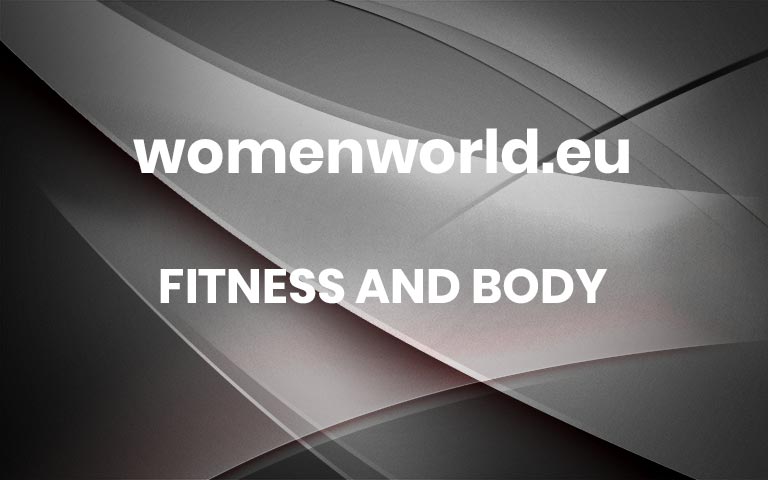These quick health tests, which you can do at home, take minutes (in some cases, seconds) and can reveal a number of things that need attention. Hop onto it.
Why Your Should Be Doing Your Own Health Checks At Home
Reality check: At your last doctor’s visit, how long did it take? 15 minutes? Maybe less? Contending with short doc appointments – problems with that notwithstanding – means you need to advocate for yourself and have info on hand. Plus, knowing your health status only benefits you more in the long run, especially when it comes to being heard by your GP.
Added to that, self-screenings play a vital role in catching conditions early on when they’re still easier to treat. Arm yourself by doing these speedy checks below and making sure that when your app does arrive, you’ve got all your bases covered.
READ MORE: This Is What It REALLY Feels Like To Have A Mammogram
The 9 Quick Health Tests You Should Do Today
Test 1: Climb The Stairs
Time: 3 minutes
Do it: Try climbing four flights of stairs in less than a minute – no running required
What It Shows
Per study author Dr Jesús Peteiro, a cardiologist at University Hospital A Coruña, Spain, taking the stairs is a good indicator of how well your ticker is, well, ticking. “If it takes you more than one-and-a-half minutes to ascend four flights of stairs, your health is suboptimal, and it would be a good idea to consult a doctor,” he explained in a press release.
In the study, participants ran on a treadmill and then climbed a set of stairs after a brief rest. 58 percent of patients who completed the stair climb in more than 1.5 minutes had abnormal heart function, the studies revealed.
Out of breath or feeling a tightness in your chest? See your doc, ASAP.
READ MORE: 5 Heart Disease Risk Factors Every Woman Needs To Know About
Test 2: Balance On One Leg
Time: 40 seconds
Do it: Take off your shoes. Now, balance on one leg for ten seconds. Easy enough? Do it with your eyes closed.
What This Quick Health Test Shows
Bummer alert: Balance deteriorates as you age. But according to studies, having good balance is a powerful indicator of how long – and healthily – you’ll live. In a 2014 British Medical Journal study, 53-year-old adults were tested by seeing how long they could stand on one leg. When the researchers returned to the study 13 years later, they found that the test had independently predicted the chance of participants dying over that period.
The highest indicator of death? Lasting less than two seconds. It’s hard because when we remove our eyes from the equation, our body has to work that much harder to keep us upright. But all is not lost. Improve your balance with single-leg deadlifts that build all-over strength, or try yoga.
READ MORE: Boost Your Morning Routine With This Easy 15-Minute Yoga Flow
Test 3: Check Your Moles
Time: 5 minutes
Do it: Examine yourself in a well-lit room, checking your back, upper arms and backs of your legs as well as everywhere else. Check for abnormal growths and misshapen moles.
What This Shows
Checking your skin for moles is the second line of defence against skin cancer (the first being rigorous use of sunscreen). “Melanoma is a type of skin cancer affecting melanocytes, the pigment-producing cells,” says Pretoria-based dermatologist Dr Tarryn Jacobs. “It is also the most dangerous type because of its potential spread to distant organs and tissues.”
Even if you’re a POC, checking for moles is vital, says Dr Jacobs. “Although certain skin cancers are less prevalent in non-Caucasian racial groups, when they do occur, they tend to be diagnosed at a later stage,” she says. “The most common location for melanoma in patients of skin of colour is the lower extremities – the soles of the feet, in particular. This is a type of melanoma called acral lentiginous melanoma, which is an aggressive type.”
READ MORE: Sunscreens For Every Skin Type And Situation
Test 4: Check Your Breasts
Time: 5 minutes
Do it: Check your breasts for lumps, bumps and abnormalities.
What This Quick Health Test Shows
When combined with regular screenings with your doc and mammograms, self-screening is a powerful tool in detecting breast cancer. If you’re a person of colour, check your tatas, even if you’re young. Per a 2020 study, breast cancer in Black women often manifests at a young age. But, as with anything, it can happen to anyone, so check yo’self a few days after every period ends, according to Breastcancer.org.
Exactly how to check your breasts
Stand in front of the mirror, hands at your hips and have a look at your melons. Check that they’re not swollen or distorted. Check for inverted nipples, redness, soreness or rashes.
Next, lie down with one hand above your head. With your other, press down with your fingers and move them in a small, circular motion. Cover the entire breast from top to bottom, side to side; from your collarbone to the top of your abdomen, and from your armpit to your cleavage. Breasts should feel firm and not lumpy.
READ MORE: 11 Symptoms Of Breast Cancer In Women That Aren’t Lumps
Test 5: Check Your Iron Levels
Time: 30 seconds
Do it: Check if the lines on your palm are pale, check for pale gums and eyelids, or cold hands and feet.
What It Shows
Around 50 percent of South African women are iron deficient, per an estimate by Ogilvy Health. A frightening statistic, with real implications. “Iron is used in the body to assist in the formation of red blood cells. These cells carry oxygen around the body, to our muscles and organs,” says Dr Eden Lurie, a GP in Cape Town.
People low on iron feel lethargic, short of breath and can even have itchy skin. “If untreated, you can be at increased risk of infection as your immunity is lowered, and in severe cases, it can lead to heart failure,” notes Dr Lurie.
READ MORE: Um, A Scary 50% Of SA Women Are Iron Deficient
Test 6: Do The Paper Test
Time: 3 seconds
Do it: Place a small piece of paper on your hands and check if it shakes. It’s better to see it this way than examining your hand by itself.
What it shows
Shaking hands can reveal a few things. It can be hereditary, so see if your folks have shaky hands, too. Had too much caffeine? Stressed? These could cause a case of the trembles. On the other, erm, hand, it could also be a sign of neurological disease or a simple vitamin B12 deficiency.
If you’re also struggling with rapid weight loss and a rapid or irregular heartbeat, shaking hands could be a sign of hyperthyroidism, a condition when your thyroid gland makes too much of the thyroid hormone. “If your hands are shaking it is best to visit your doctor for a full check-up,” advises Dr Lurie.
READ MORE: 10 Best Essential Oils To Help Relieve Anxiety and Stress
Test 7: Ask Yourself These Questions
Time: 15 minutes
Do it: Ask yourself these questions, suggests psychologist Sanam Naran, founder of Conscious Psychology in Johannesburg.
What are the three most frequent emotions I’ve been feeling in the last two weeks to a month?
Can I easily name my emotions or do I struggle to put a name to them?
Do I notice changes in my sleeping patterns or eating habits?
How often do I do things that I enjoy or put my needs first?
What do I do to take care of my mental health?
On a scale of 1-10 (1 being low, 10 being good) how would I describe my emotional health?
What it shows
“These questions are important because they gauge whether an individual’s mental health is good or needs to be taken care of,” elaborates Naran. “It also allows them to reflect a bit deeper on themselves and ask questions that they may have been ignoring.” If your answers to these questions turn out less than satisfactory, it might be time to chat with a therapist, who can help sort through what’s really behind your low feelings.
READ MORE: 18 Mental Health Books For Anxiety, People-Pleasing And More
Test 8: Complete The Sitting To Rising Test
Time: 2 minutes
Do it: Simply stand up, then lower yourself into a cross-legged position, without using your hands or knees. Now, stand back up again – without using your hands or knees. It’s easier said than done.
What this quick health test shows
While it might make for great TikTok content, this challenge does so much more than that. A group of Brazilian researchers linked this test to mortality, with those able to perform it being more likely to live longer. “It is well known that aerobic fitness is strongly related to survival, but our study also shows that maintaining high levels of body flexibility, muscle strength, power-to-body weight ratio, and coordination are not only good for performing daily activities but have a favourable influence on life expectancy,” says Dr Claudio Gil Araújo of the Clinimex Exercise Medicine Clinic in Rio de Janeiro in a press release.
READ MORE: 9 Bodyweight Exercises That Will Improve Your Mobility
Test 9: Measure Your Waist
Time: 2 minutes
Do it: Use a tape measure and see how large your waist circumference is, measuring right above your belly button.
What it shows
“Waist circumference is a good indicator of your visceral fat – namely fat surrounding your abdominal organs that shows on your torso,” says Dr Lurie. When it exists in excess, this kind of fat can be dangerous to your health. “Having an increased waist circumference puts you at higher risk for developing high blood pressure, diabetes and coronary heart disease,” warns Dr Lurie.
If yours is larger than 80cm, it’s time to make some changes. Incorporate more veg into your diet, reduce stress (cortisol plays a role in fat stores), nix the fast food and pick up more exercise to reduce this kind of fat around your abdomen.
This story was published in the March/April 2024 edition of Women’s Health South Africa by Michelle October. More




